Assess Yourself
How well do you understand the ideas in this lesson?
Goal:
Goal:
Are you ready to take this lesson's quiz? These questions will help you find out. Go back to the lesson if you do not know an answer.
1. Which number lines prove 23 and 46 are equivalent fractions?
-

Two number lines.
Top: Number line from 0 to 1 with 4 marks in between. Marks are labeled from 03 to 33 with a dot on 23.
Bottom: Number line from 0 to 1 with 7 marks in between. Marks are labeled from 06 to 66 with a dot on 46.
-
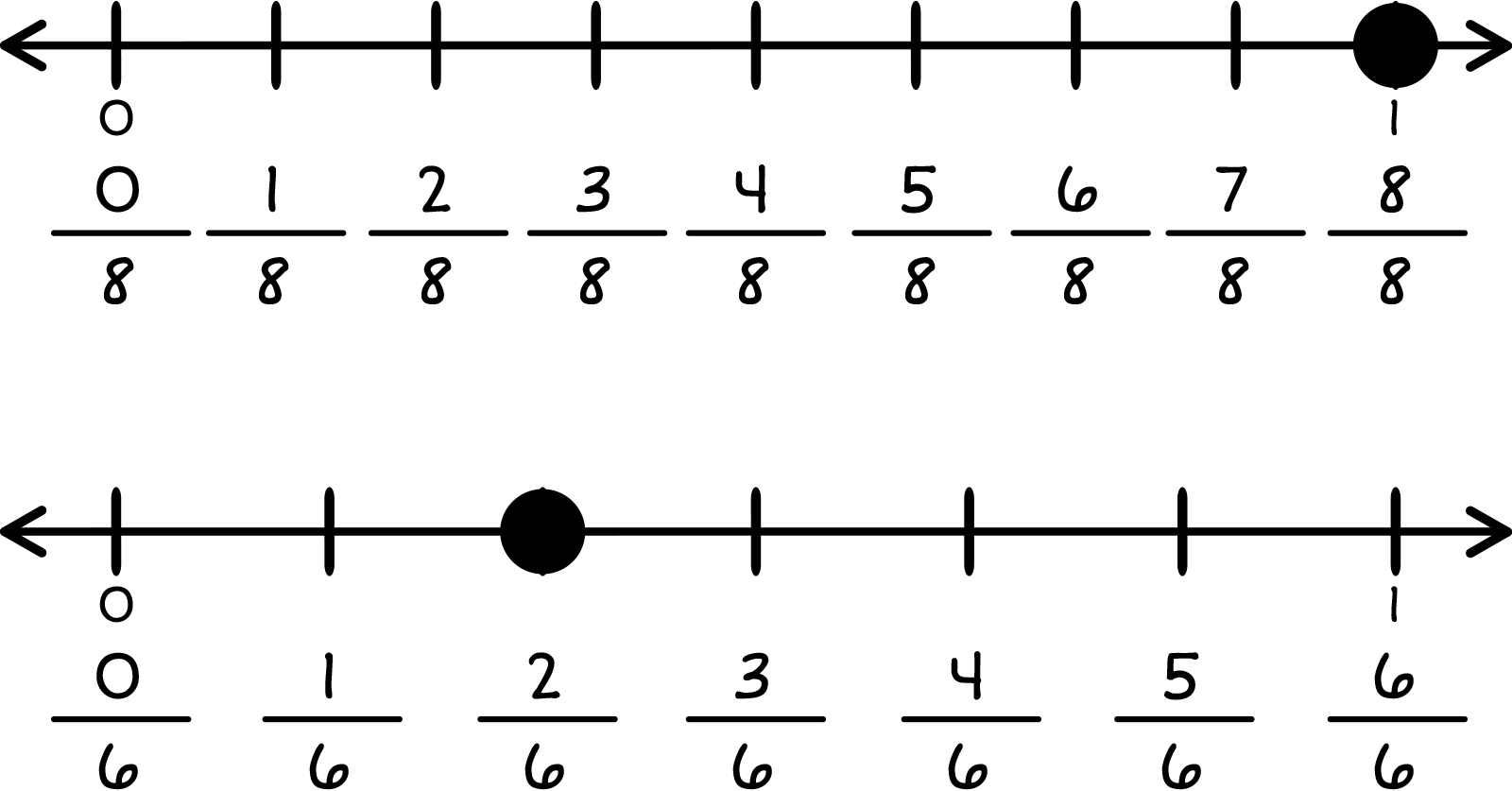
Two number lines.
Top: Number line from 0 to 1 with 9 marks in between. Marks are labeled from 08 to 88 with a dot on 88.
Bottom: Number line from 0 to 1 with 7 marks in between. Marks are labeled from 06 to 66 with a dot on 26.
-
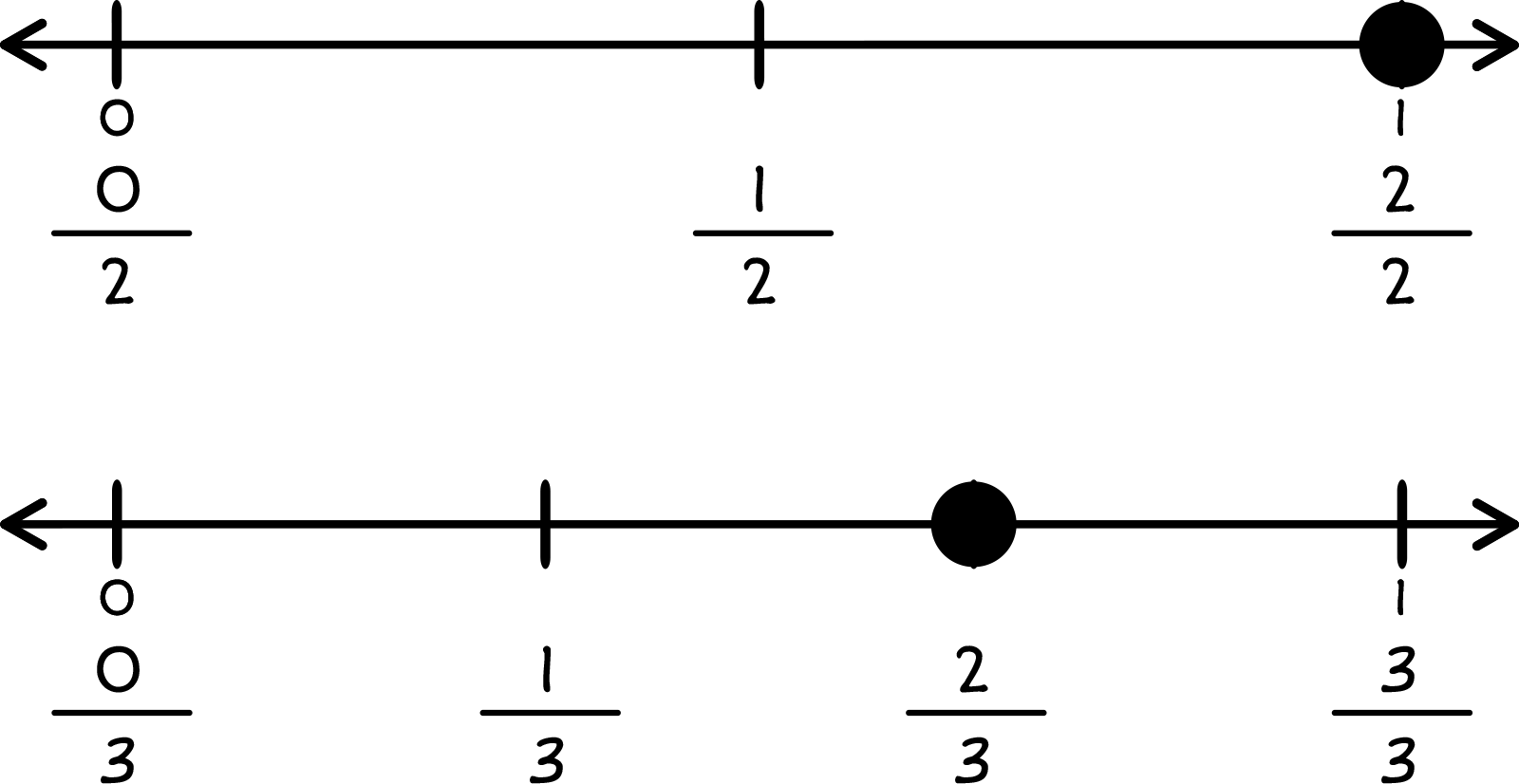
Two number lines.
Top: Number line from 0 to 1 with 3 marks in between. Marks are labeled from 02 to 22 with a dot on 22.
Bottom: Number line from 0 to 1 with 4 marks in between. Marks are labeled from 03 to 33 with a dot on 23.
-
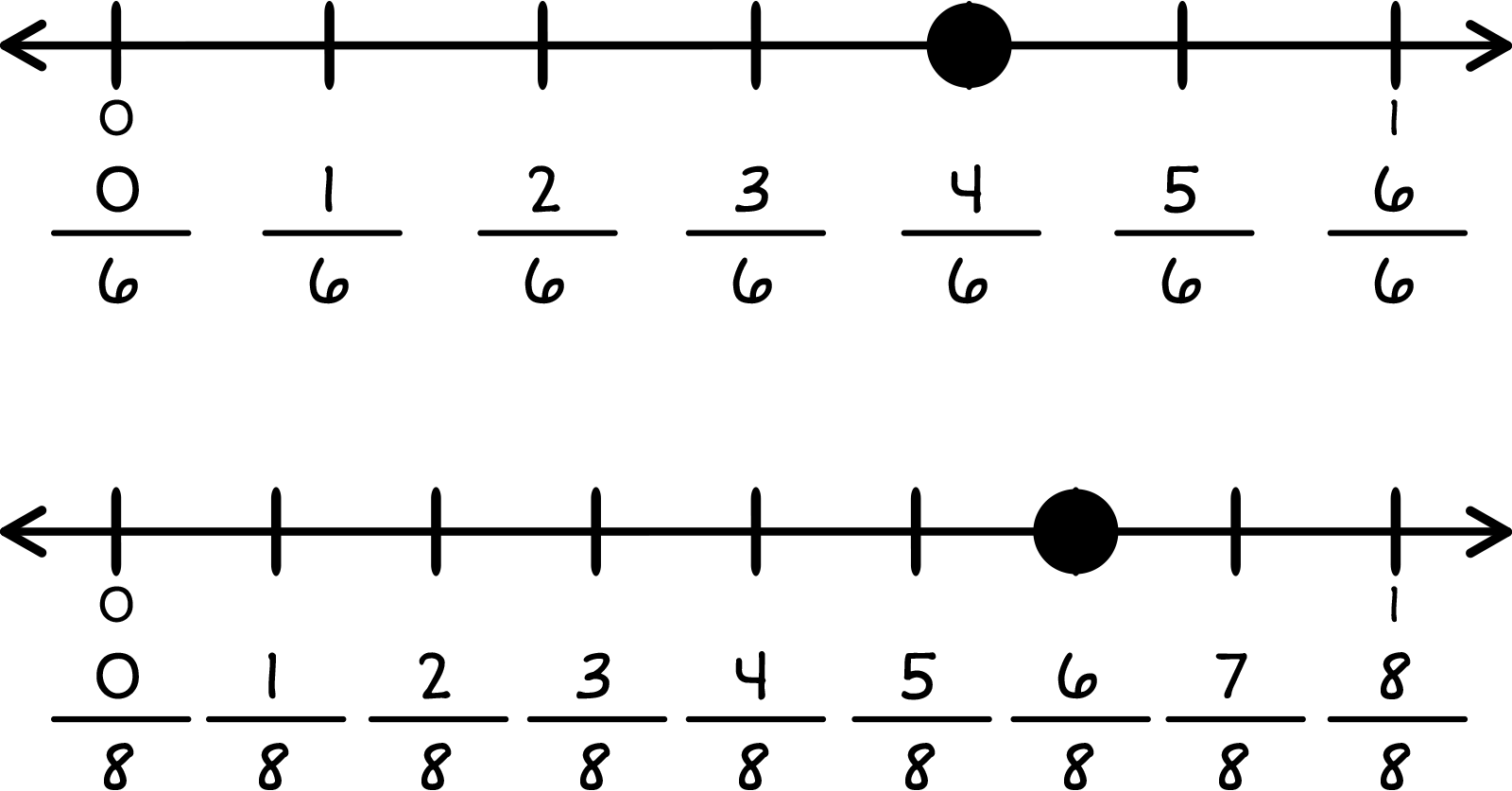
Two number lines.
Top: Number line from 0 to 1 with 7 marks in between. Marks are labeled from 06 to 66 with a dot on 46.
Bottom: Number line from 0 to 1 with 9 marks in between. Marks are labeled from 08 to 88 with a dot on 68.
Yes! The dots on these number lines make a straight line from 23 to 46.
Sorry, that is not correct. The dots on these number lines do not line up.
Sorry, that is not correct. The dots on these number lines do not line up.
Sorry, that is not correct. The dots on these number lines do not line up.
2. Which models show 22 is equivalent to 88?
-
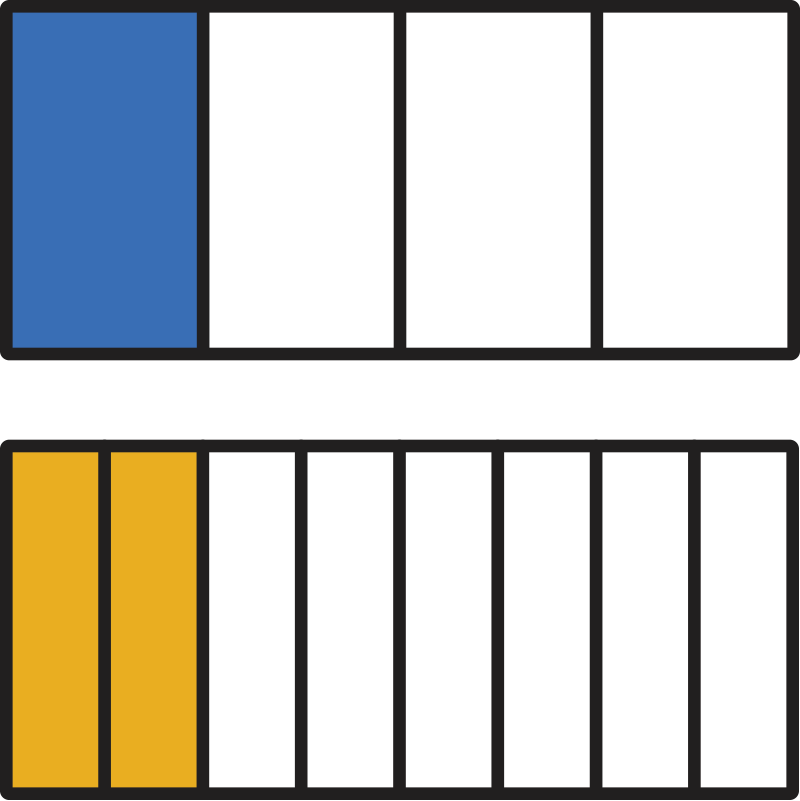
Two rectangles.
Top: Rectangle partitioned into 4 parts with 1 filled in.
Bottom: Rectangle partitioned into 8 parts with 2 filled in.
-
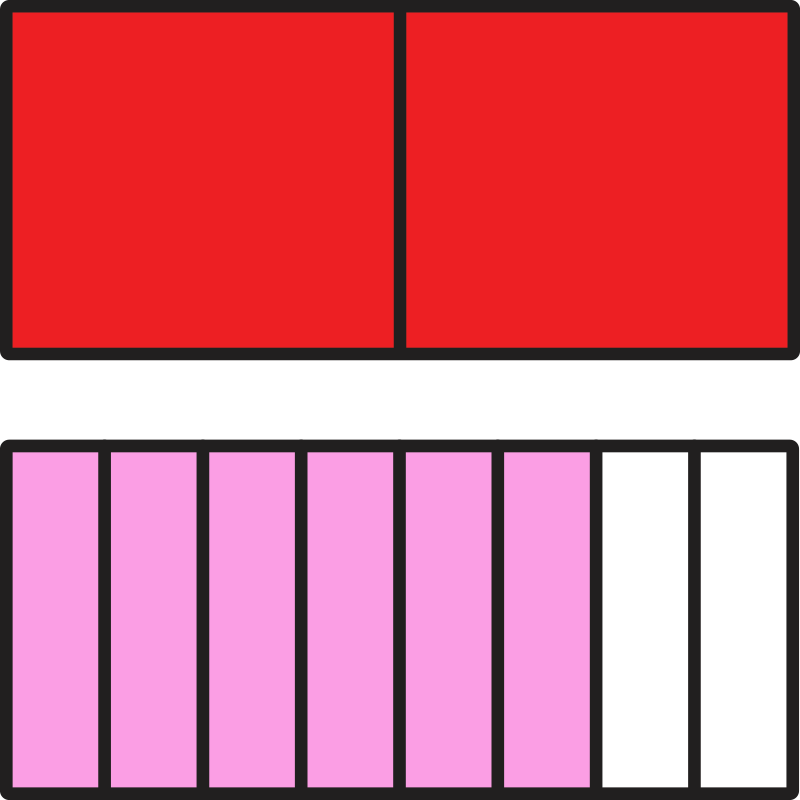
Two rectangles.
Top: Rectangle partitioned into 2 parts with 2 filled in.
Bottom: Rectangle partitioned into 8 parts with 6 filled in.
-
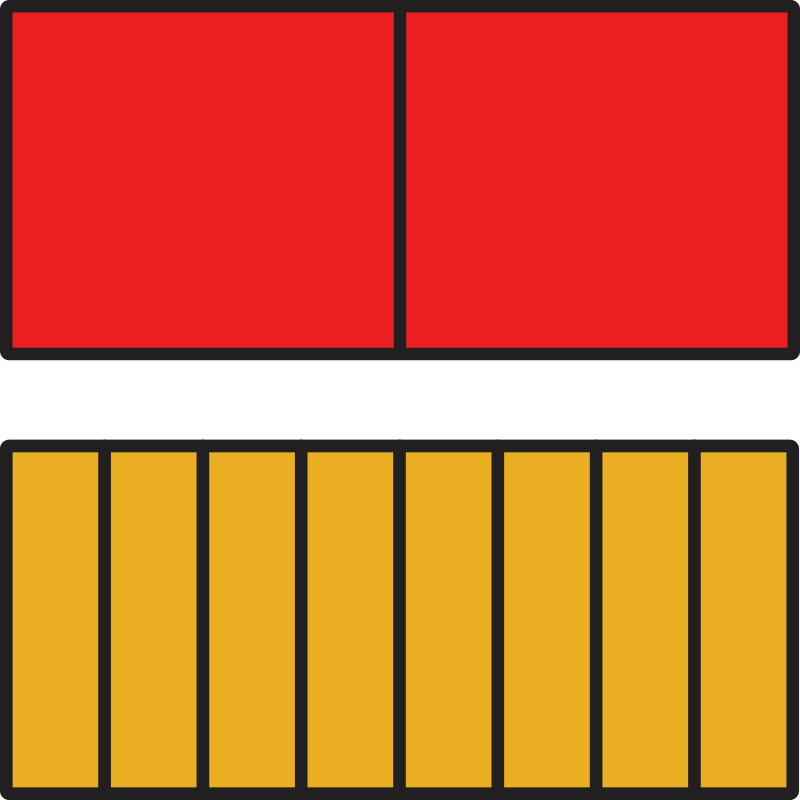
Two rectangles.
Top: Rectangle partitioned into 2 parts with 2 filled in.
Bottom: Rectangle partitioned into 8 parts with 8 filled in.
-
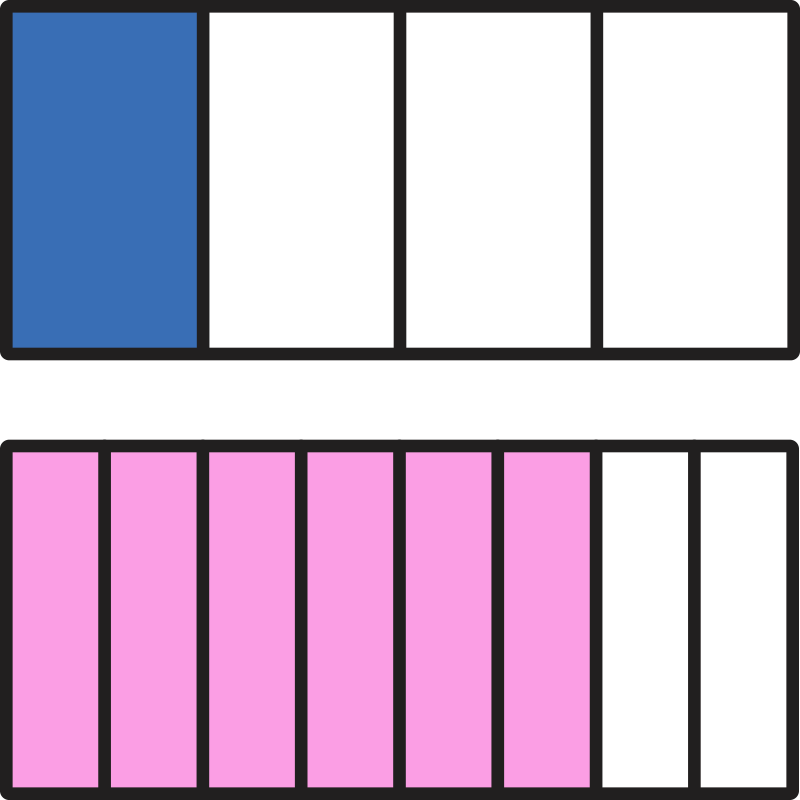
Two rectangles.
Top: Rectangle partitioned into 4 parts with 1 filled in.
Bottom: Rectangle partitioned into 8 parts with 6 filled in.
Sorry, that is not correct. These shapes show that 14 is equivalent to 28.
Sorry, that is not correct. These models show 22 and 68.
Yes! These shapes show that 22 is equivalent to 88.
Sorry, that is not correct. These shapes show 14 and 68.
3. Which fractions are equivalent according to these models?

- 04=22
- 23=12
- 18=46
- 48=36
Sorry, that is not correct. These are not the fractions shown in the models.
Sorry, that is not correct. These are not the fractions shown in the models.
Sorry, that is not correct. These are not the fractions shown in the models.
Correct! 48 is equivalent to 36 because they name the same amount.
4. Which number lines prove 36 and 24 are equivalent fractions?
-
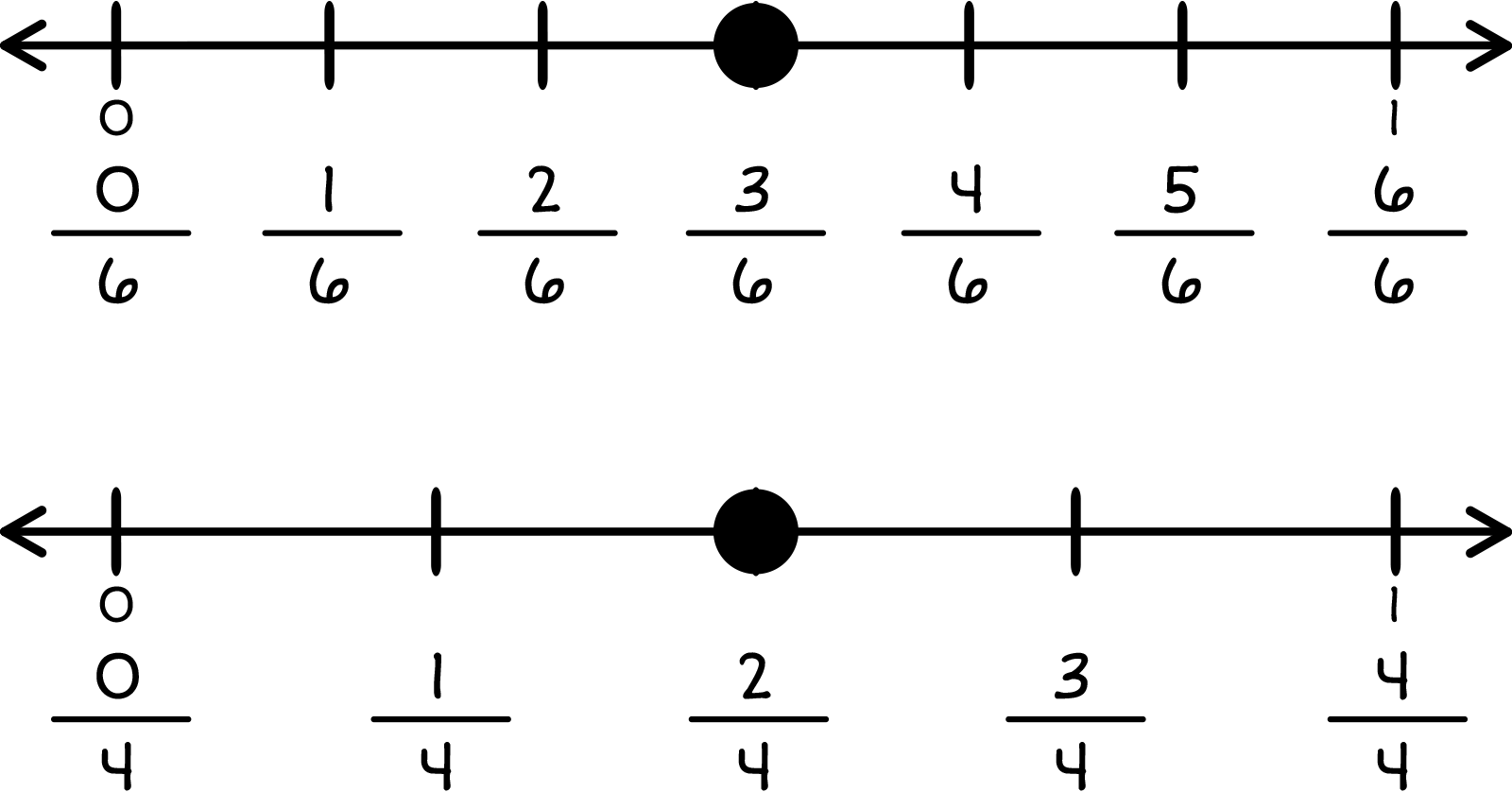
Two number lines.
Top: Number line from 0 to 1 with 7 marks in between. Marks are labeled from 06 to 66 with a dot on 36.
Bottom: Number line from 0 to 1 with 5 marks in between. Marks are labeled from 04 to 44 with a dot on 24.
-

Two number lines.
Top: Number line from 0 to 1 with 7 marks in between. Marks are labeled from 06 to 66 with a dot on 36.
Bottom: Number line from 0 to 1 with 5 marks in between. Marks are labeled from 04 to 44 with a dot on 24.
-
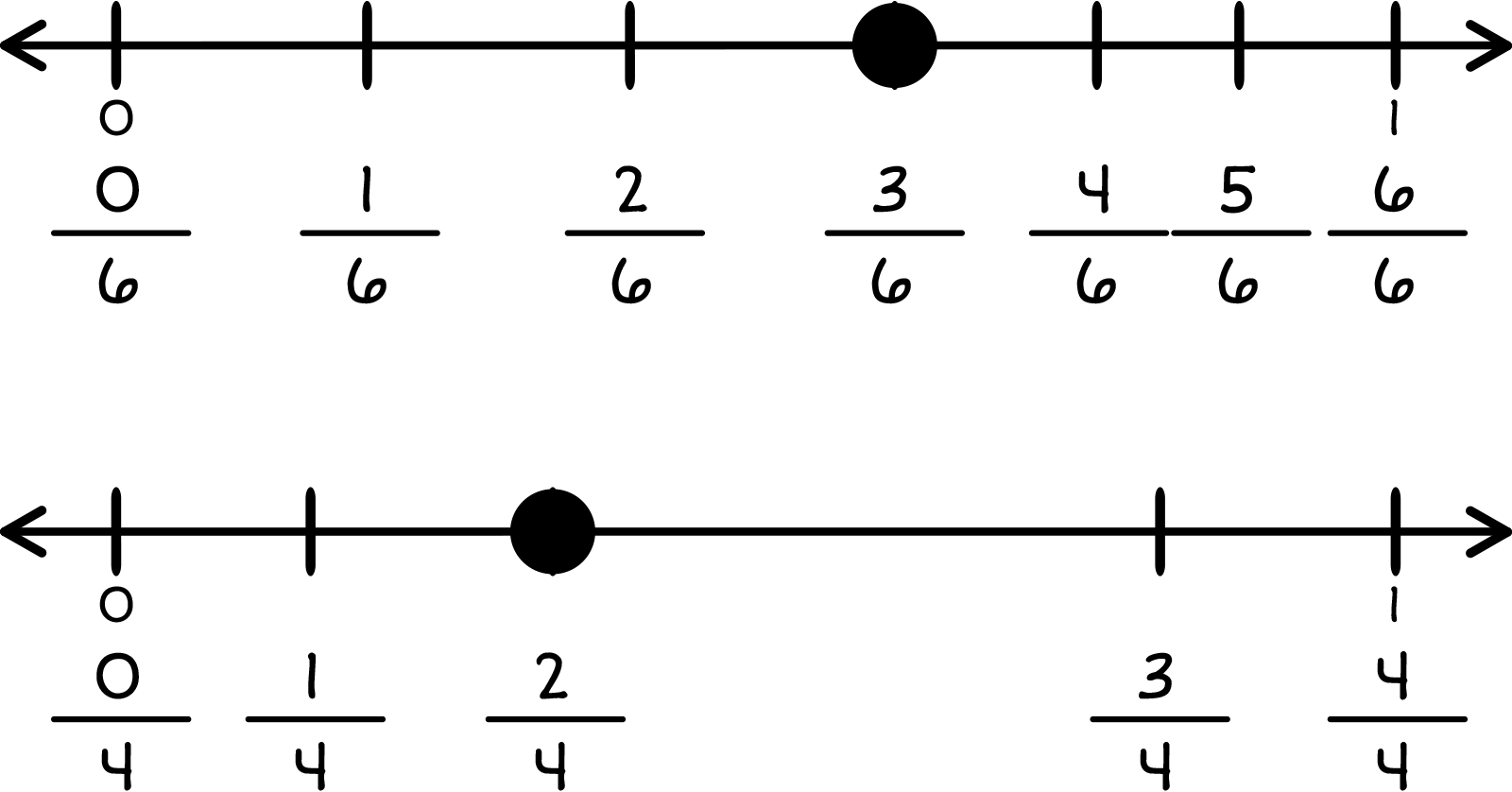
Two number lines.
Top: Number line from 0 to 1 with 7 marks in between. Marks are labeled from 06 to 66 with a dot on 36.
Bottom: Number line from 0 to 1 with 5 marks in between. Marks are labeled from 04 to 44 with a dot on 24.
-
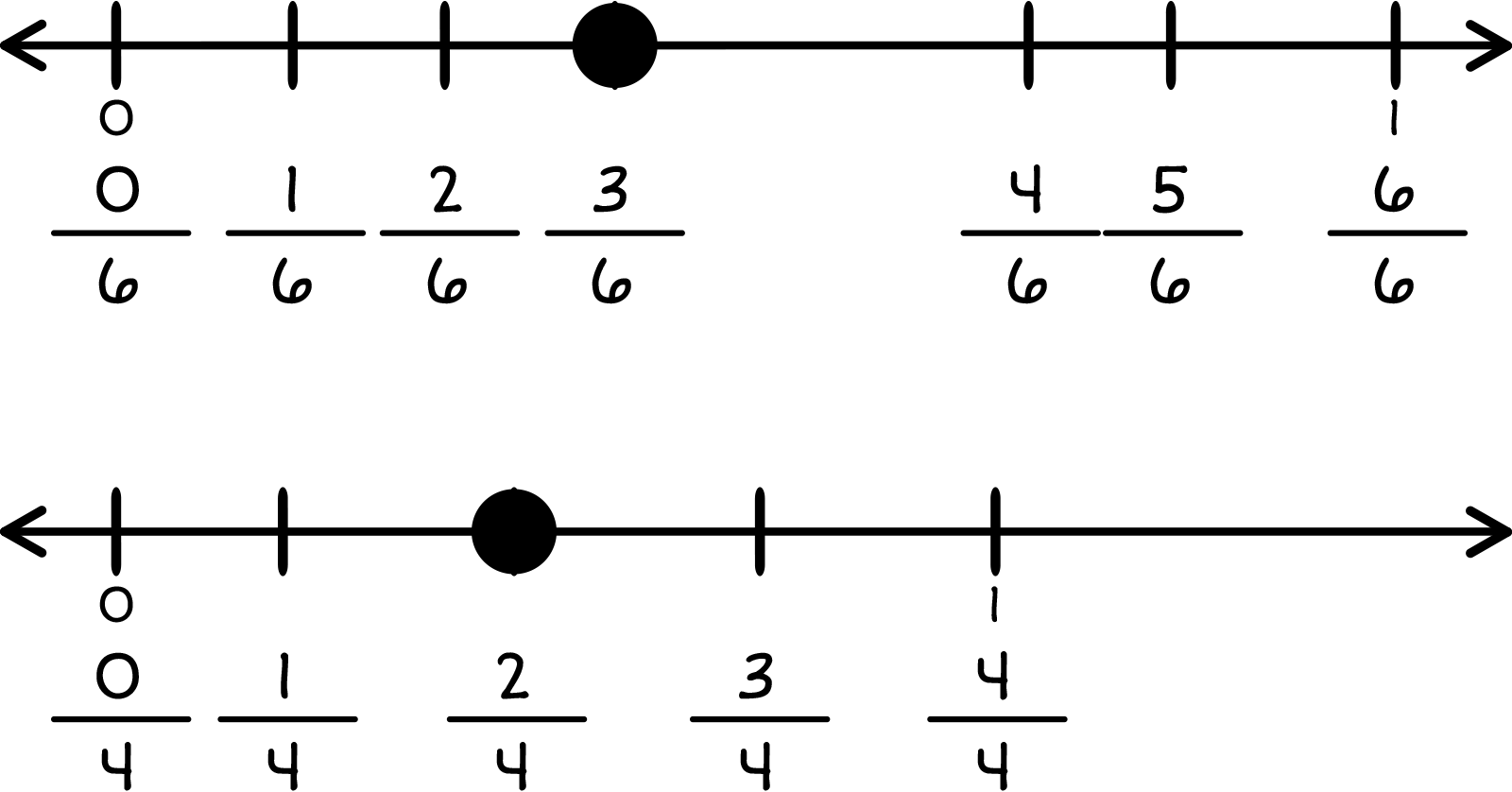
Two number lines.
Top: Number line from 0 to 1 with 7 marks in between. Marks are labeled from 06 to 66 with a dot on 36.
Bottom: Number line from 0 to 1 with X5 marks in between. Marks are labeled from 04 to 44 with a dot on 24.
Yes! These number lines have equal parts, and the dots line up.
Sorry, that is not correct. These number lines do not have equal parts.
Sorry, that is not correct. These number lines do not have equal parts.
Sorry, that is not correct. These number lines do not have equal parts.
5. Which number lines prove 12 and 48 are equivalent fractions?
-
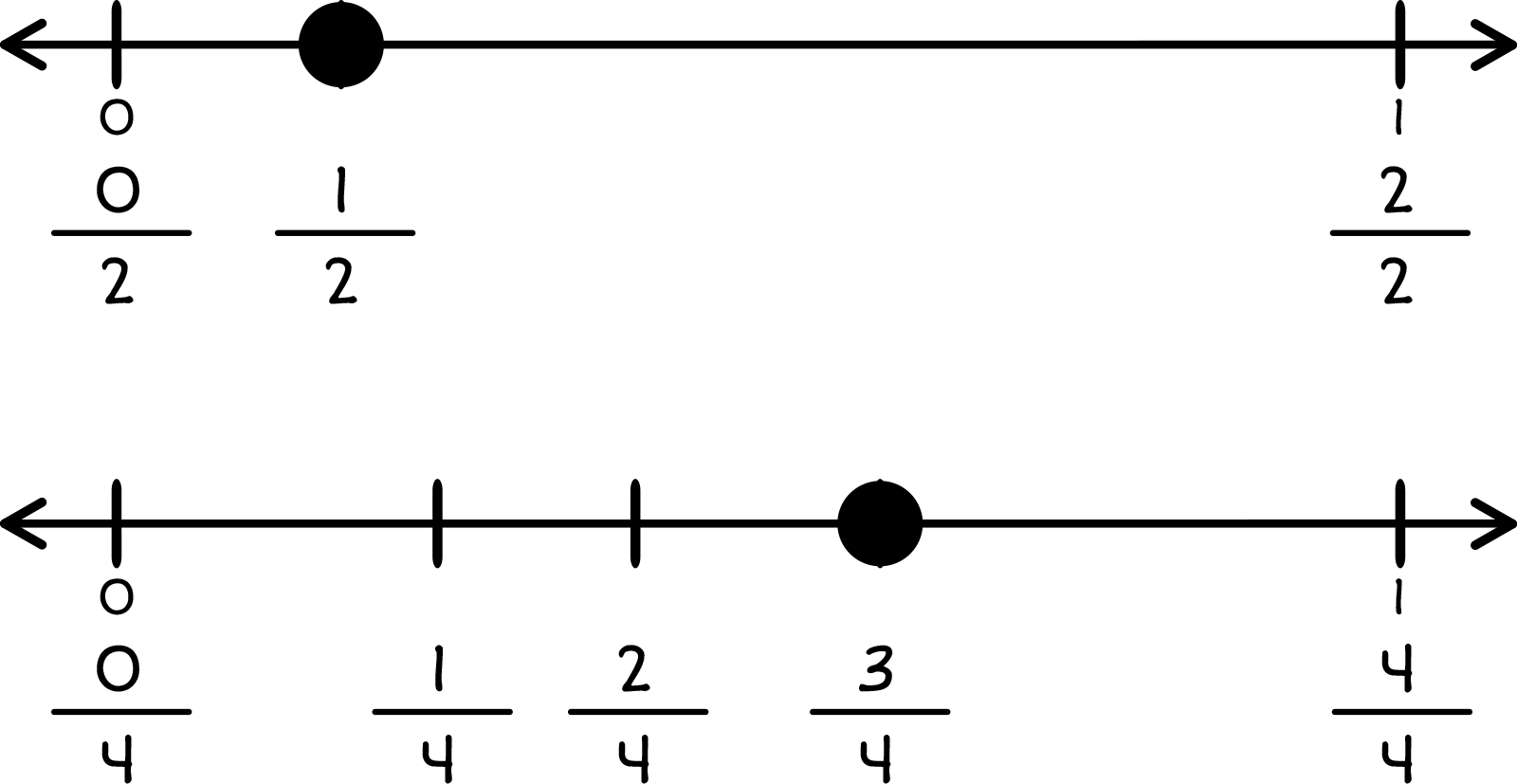
Two number lines.
Top: Number line from 0 to 1 with 3 marks in between. Marks are labeled from to with a dot on .
Bottom: Number line from 0 to 1 with 5 marks in between. Marks are labeled from 04 to 44 with a dot on 34.
-
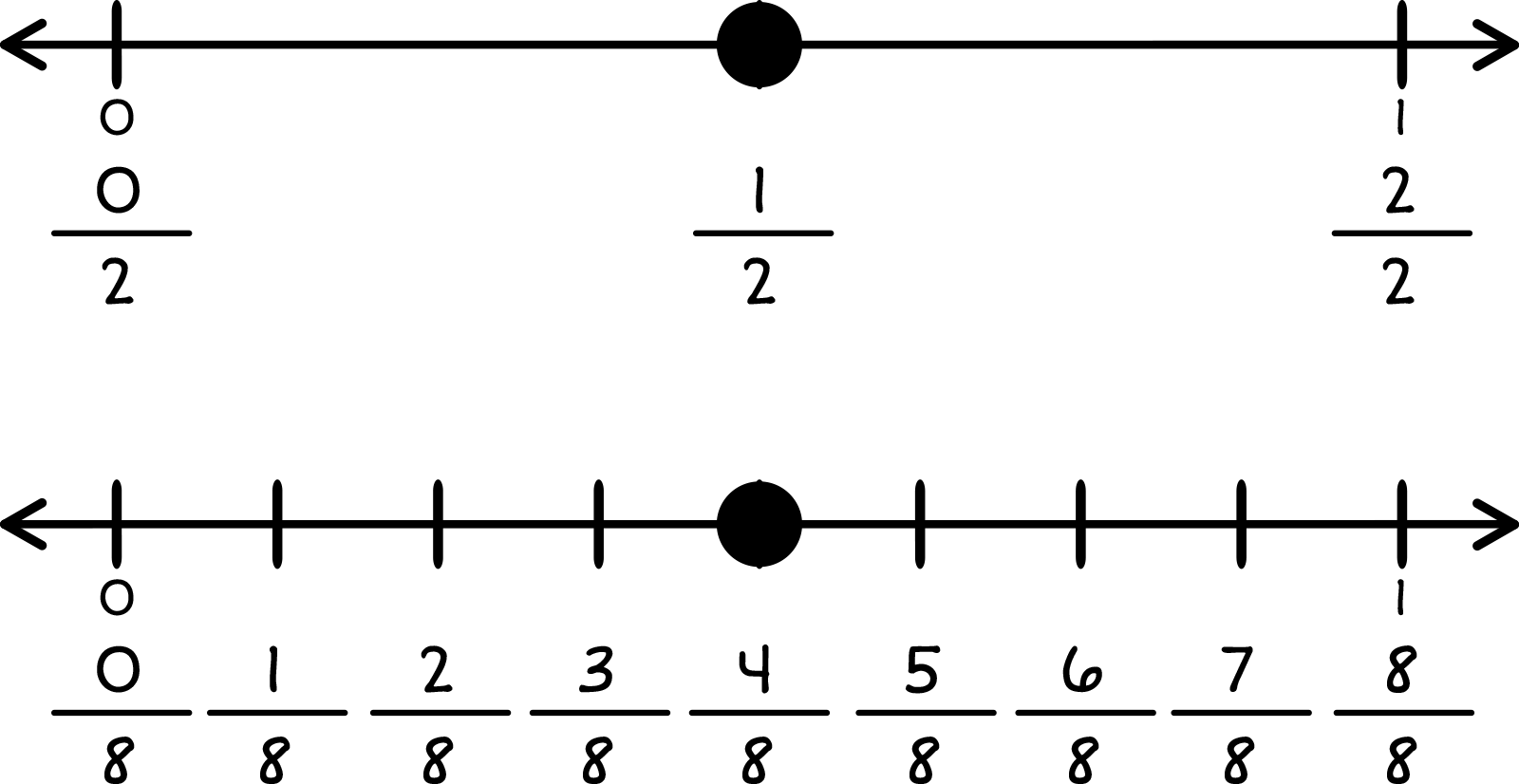
Two number lines.
Top: Number line from 0 to 1 with 3 marks in between. Marks are labeled from 02 to 22 with a dot on 12.
Bottom: Number line from 0 to 1 with 9 marks in between. Marks are labeled from 08 to 88 with a dot on 48.
-
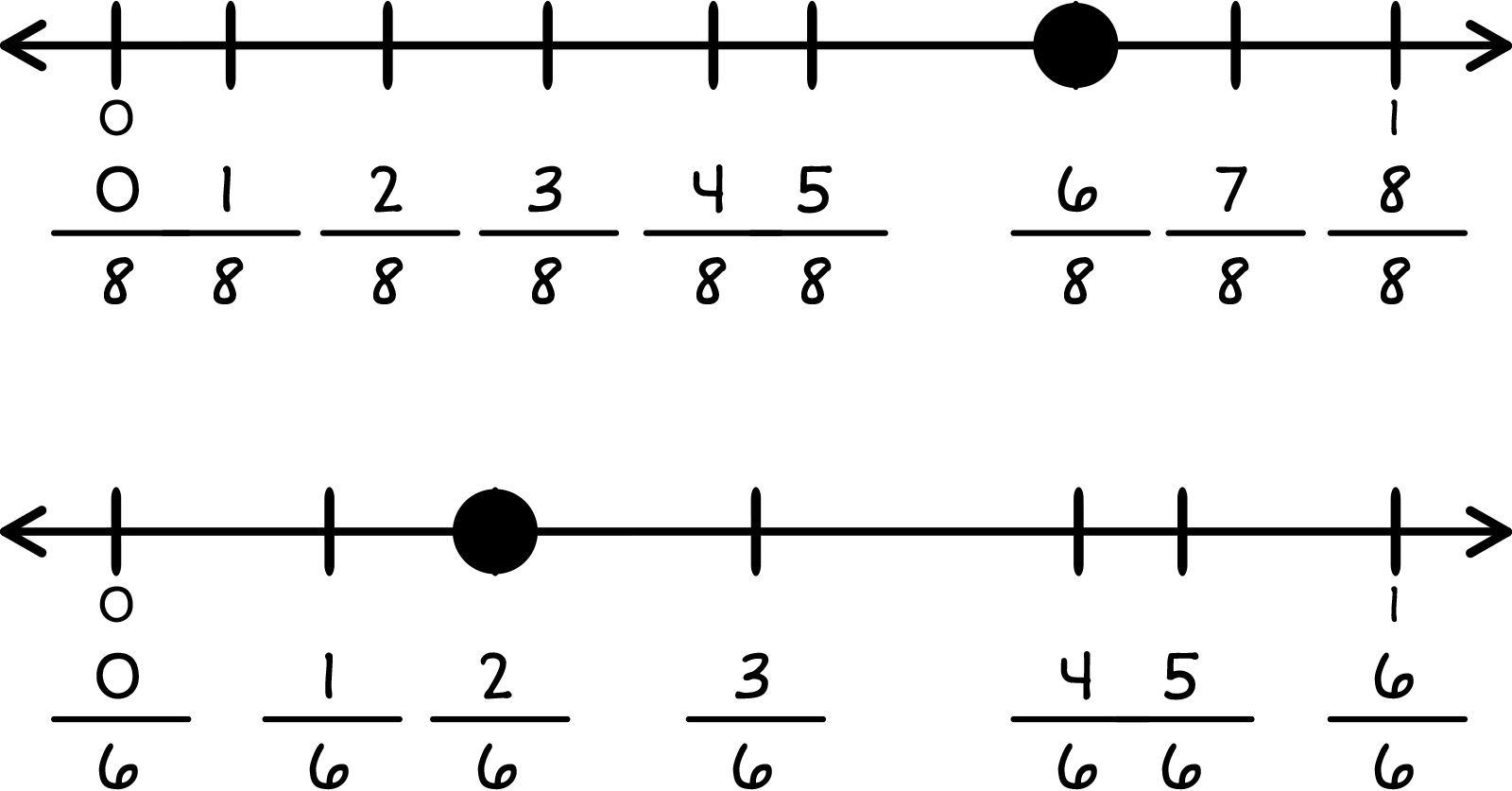
Two number lines.
Top: Number line from 0 to 1 with 9 marks in between. Marks are labeled from 08 to 88 with a dot on 68.
Bottom: Number line from 0 to 1 with 7 marks in between. Marks are labeled from 06 to 66 with a dot on 26.
-
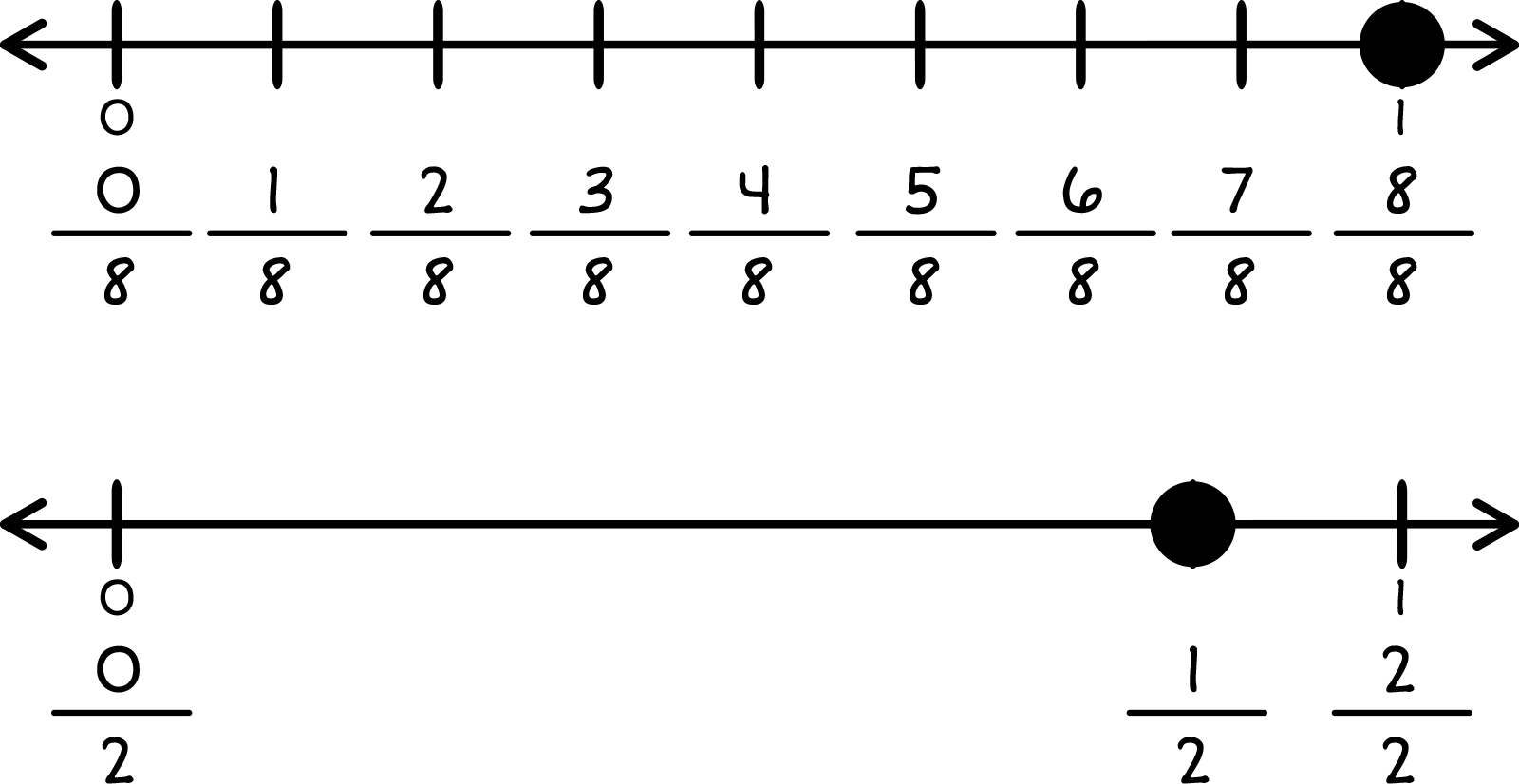
Two number lines.
Top: Number line from 0 to 1 with 9 marks in between. Marks are labeled from 08 to 88 with a dot on 88.
Bottom: Number line from 0 to 1 with 3 marks in between. Marks are labeled from 02 to 22 with a dot on 12.
Sorry, that is not correct. The dots on these number lines do not line up, and they do not have equal parts.
Yes! The dots on these number lines make a straight line from 12 to 48, and they have equal parts.
Sorry, that is not correct. The dots on these number lines do not line up, and they do not have equal parts.
Sorry, that is not correct. The dots on these number lines do not line up, and they do not have equal parts.
6. Which models show 24 is equivalent to 12?
-
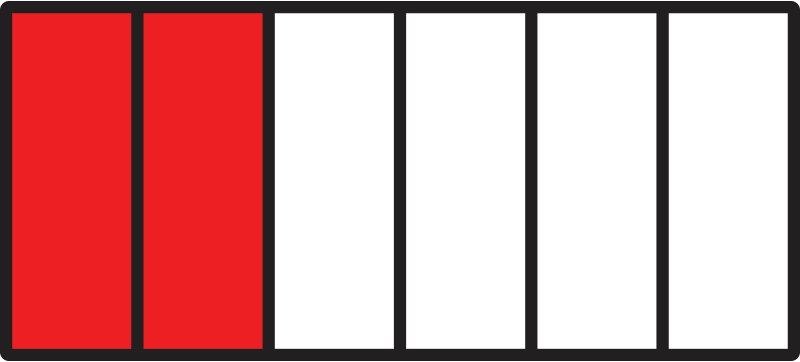
Rectangle partitioned into 6 equal parts with 2 filled in.
-
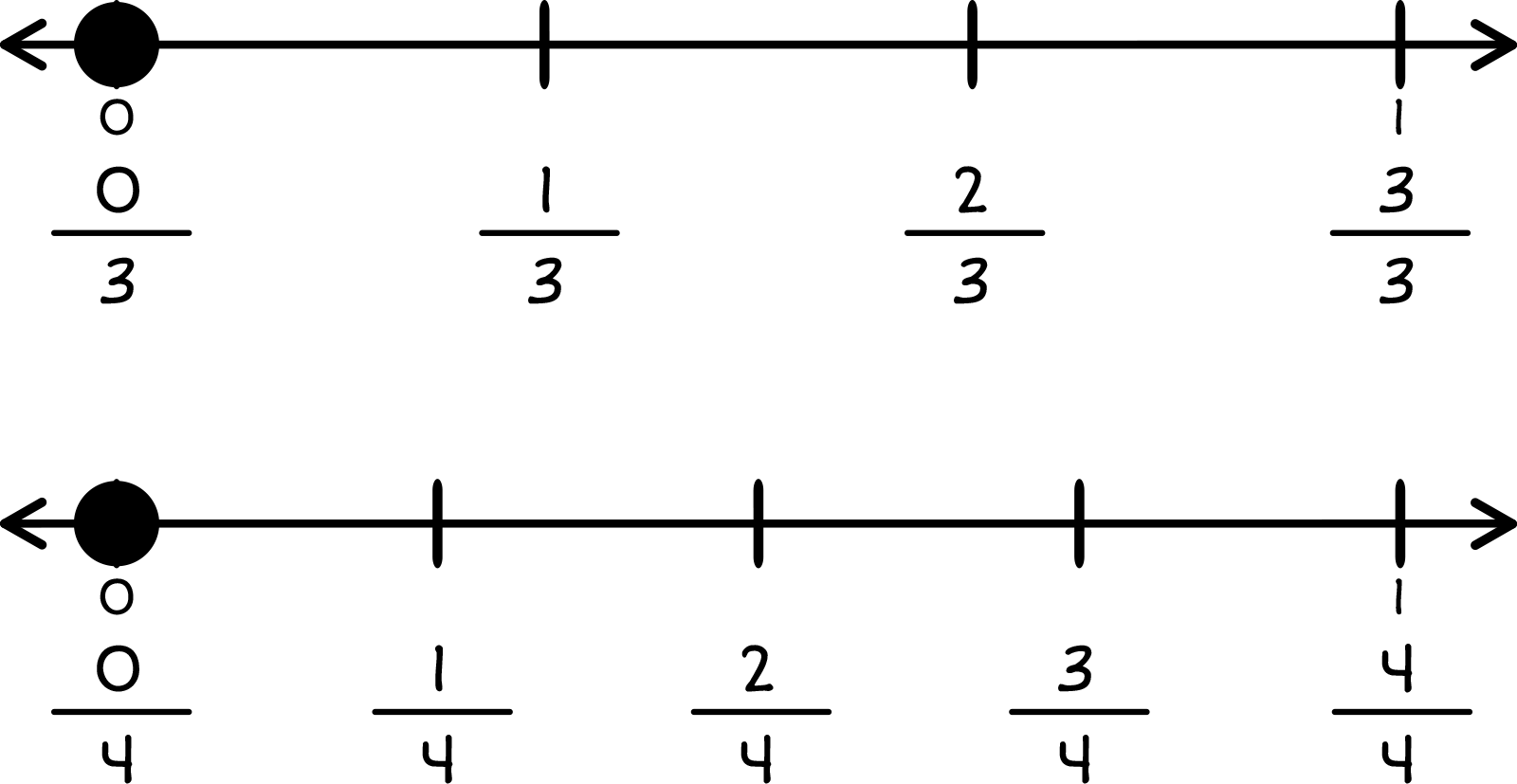
Two number lines.
Top: Number line from 0 to 1 with 4 marks in between. Marks are labeled from 03 to 33 with a dot on 03.
Bottom: Number line from 0 to 1 with 5 marks in between. Marks are labeled from 04 to 44 with a dot on 04.
-
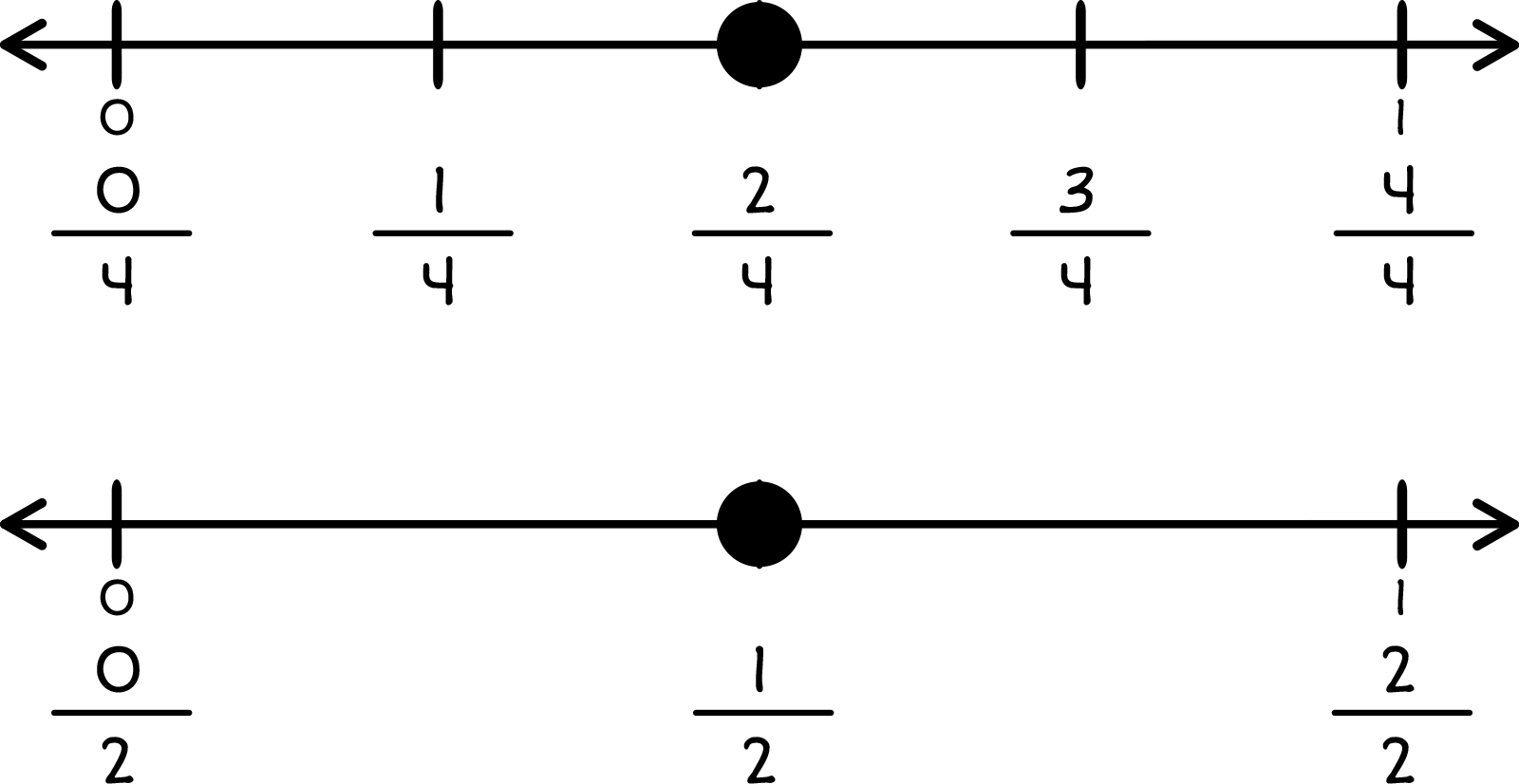
Two number lines.
Top: Number line from 0 to 1 with 5 marks in between. Marks are labeled from 04 to 44 with a dot on 24.
Bottom: Number line from 0 to 1 with 3 marks in between. Marks are labeled from 02 to 22 with a dot on 12.
-
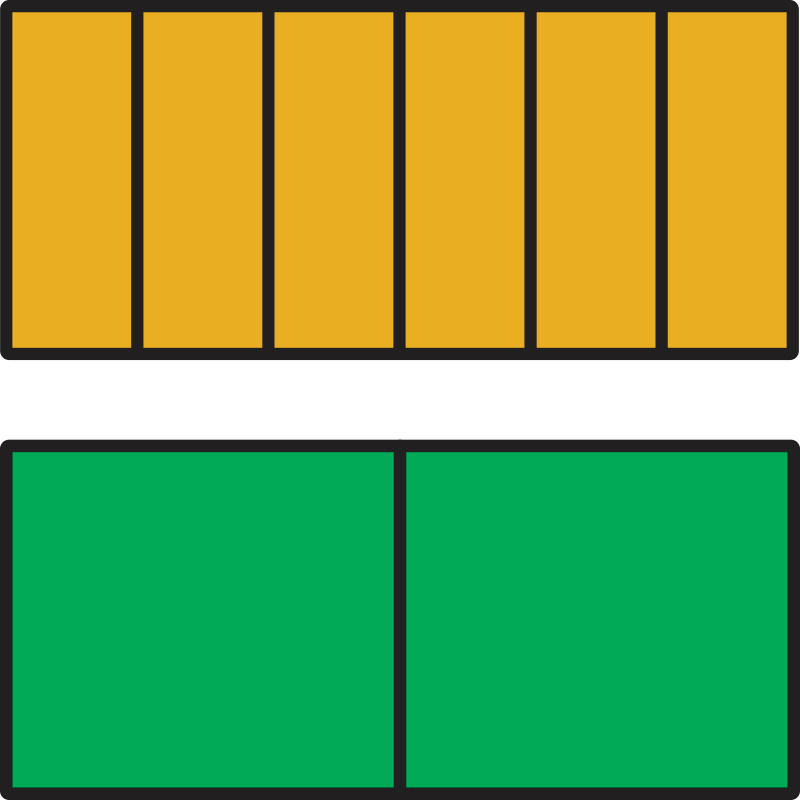
Two rectangles.
Top: Rectangle partitioned into 6 equal parts with 6 filled in.
Bottom: Rectangle partitioned into 2 equal parts with 2 filled in.
Sorry, that is not correct. These shapes show that 13 is equivalent to 26.
Sorry, that is not correct. These number lines show that 03 is equivalent to 04.
Yes! These number lines show that 24 is equivalent to 12.
Sorry, that is not correct. These shapes show that 66 is equivalent to 22.
7. Which fractions are equivalent according to these models?

- 34=16
- 58=24
- 23=18
- 26=13
Sorry, that is not correct. These are not the fractions shown in the models.
Sorry, that is not correct. These are not the fractions shown in the models.
Sorry, that is not correct. These are not the fractions shown in the models.
Correct! 26 is equivalent to 13 because they name the same amount.
8. Which number lines prove 12 and 24 are equivalent fractions?
-
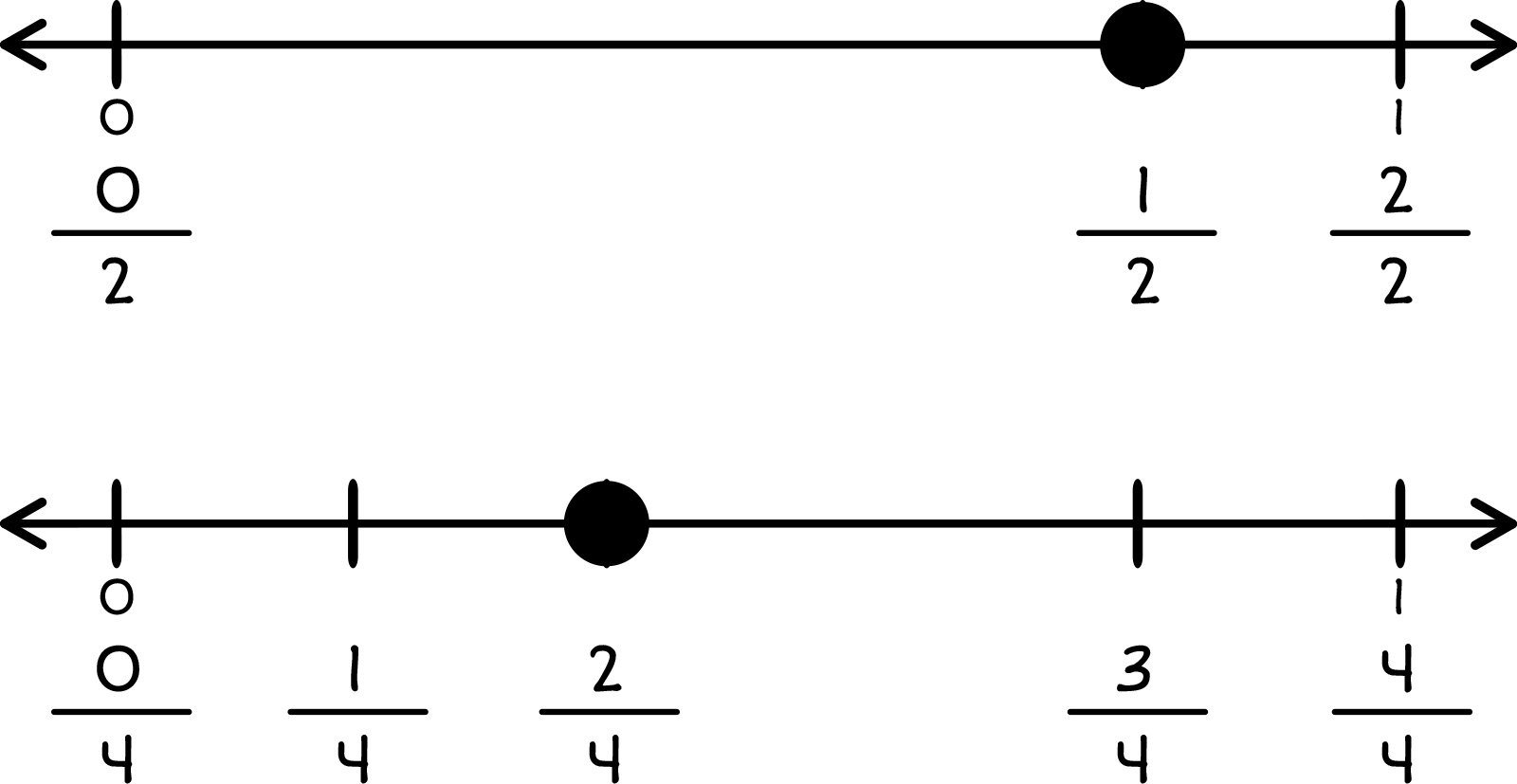
Two number lines.
Top: Number line from 0 to 1 with 3 marks in between. Marks are labeled from 02 to { \frac{2}{2} with a dot on 12.
Bottom: Number line from 0 to 1 with 5 marks in between. Marks are labeled from 04 to 44 with a dot on 24.
-
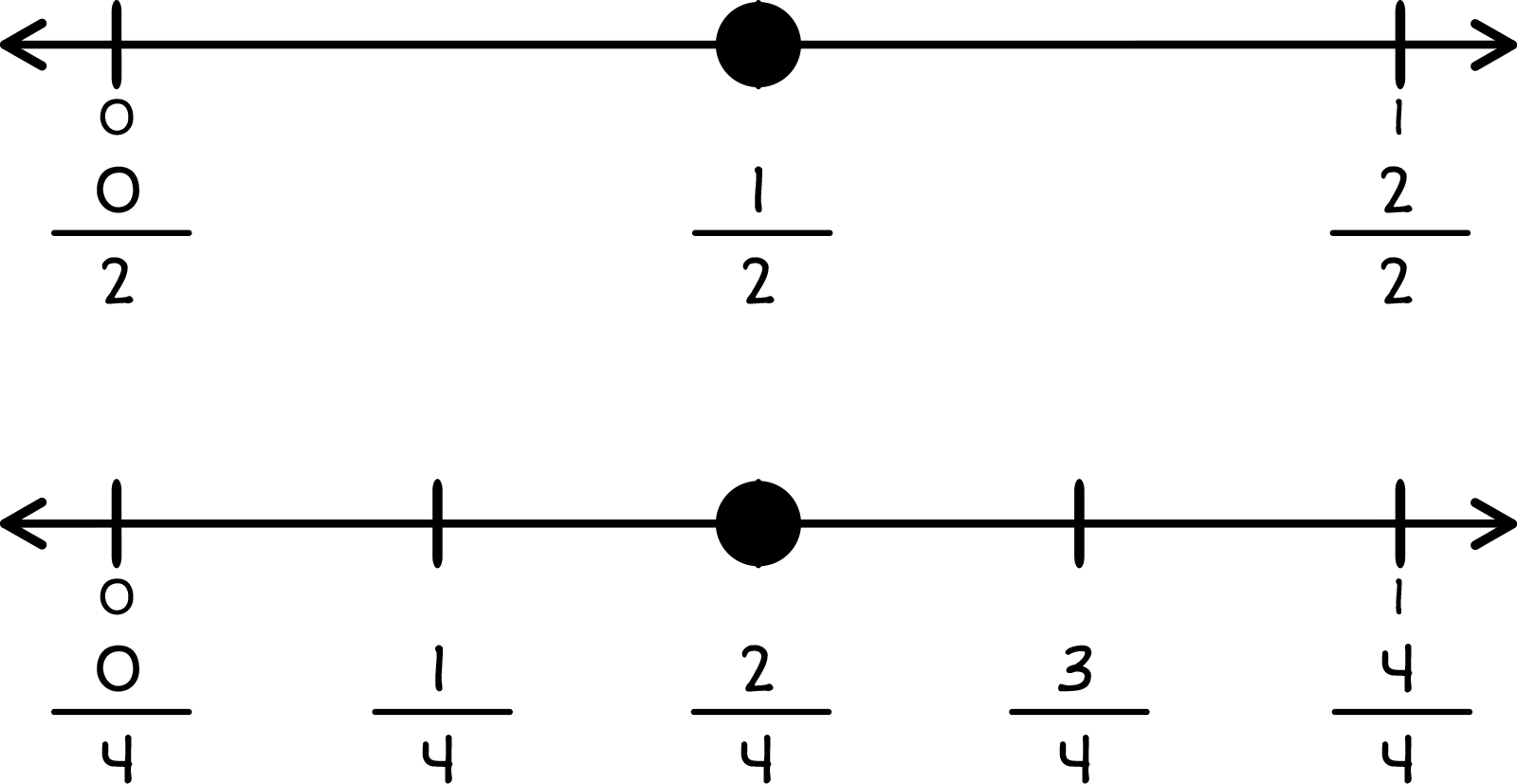
Two number lines.
Top: Number line from 0 to 1 with 3 marks in between. Marks are labeled from 02 to 22 with a dot on 12.
Bottom: Number line from 0 to 1 with 5 marks in between. Marks are labeled from 04 to 44 with a dot on 24.
-
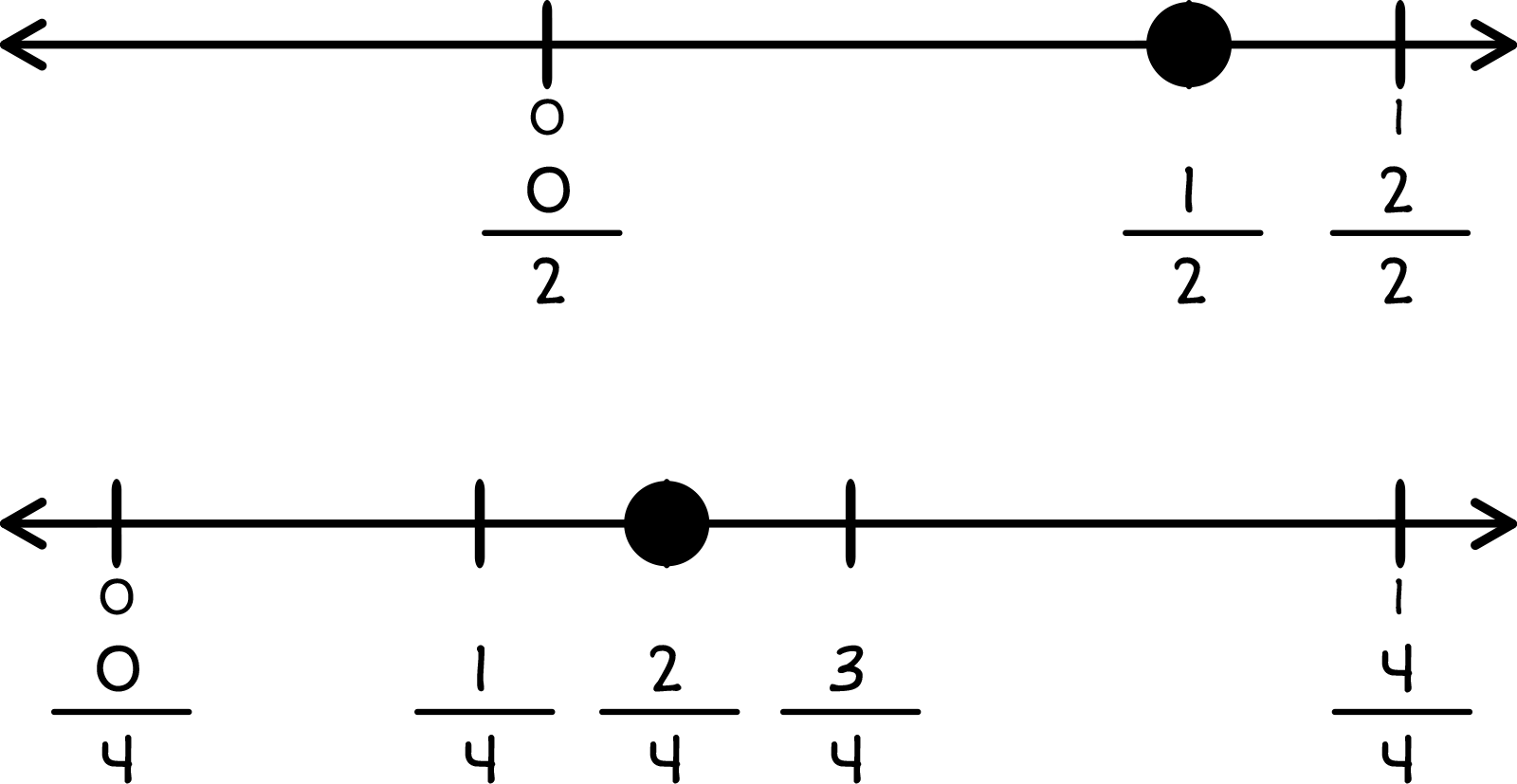
Two number lines.
Top: Number line from 0 to 1 with 3 marks in between. Marks are labeled from 02 to 22 with a dot on 12.
Bottom: Number line from 0 to 1 with 5 marks in between. Marks are labeled from 04 to 44 with a dot on 24.
-
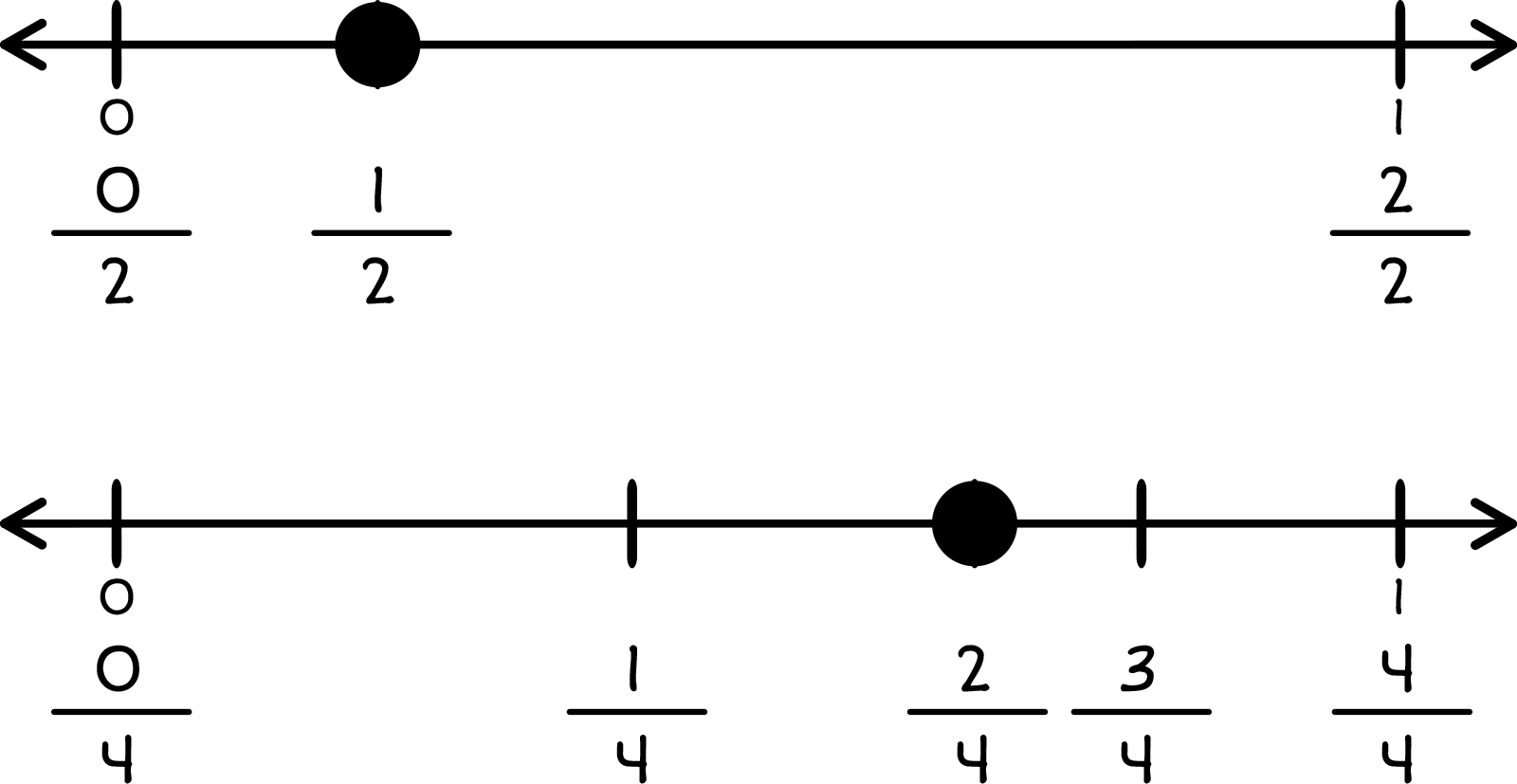
Two number lines.
Top: Number line from 0 to 1 with 3 marks in between. Marks are labeled from 02 to 22 with a dot on 12.
Bottom: Number line from 0 to 1 with 5 marks in between. Marks are labeled from 04 to 44 with a dot on 24.
Sorry, that is not correct. These number lines do not have equal parts.
Yes! These number lines have equal parts, and the dots line up.
Sorry, that is not correct. These number lines do not have equal parts.
Sorry, that is not correct. These number lines do not have equal parts.
9. Which number lines prove 48 and 12 are equivalent fractions?
-
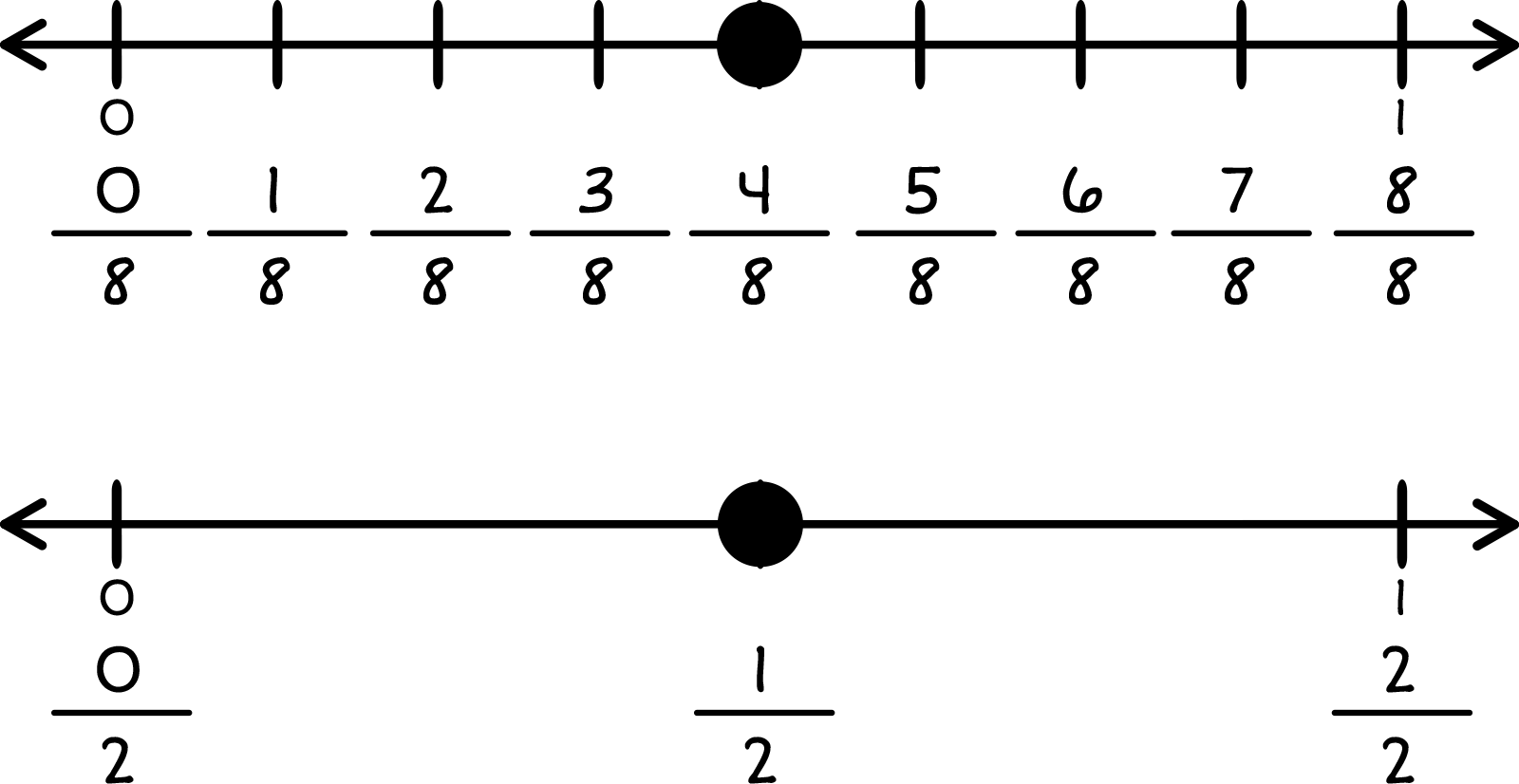
Two number lines.
Top: Number line from 0 to 1 with 9 marks in between. Marks are labeled from 08 to 88 with a dot on 48.
Bottom: Number line from 0 to 1 with 3 marks in between. Marks are labeled from 02 to 22 with a dot on 12.
-
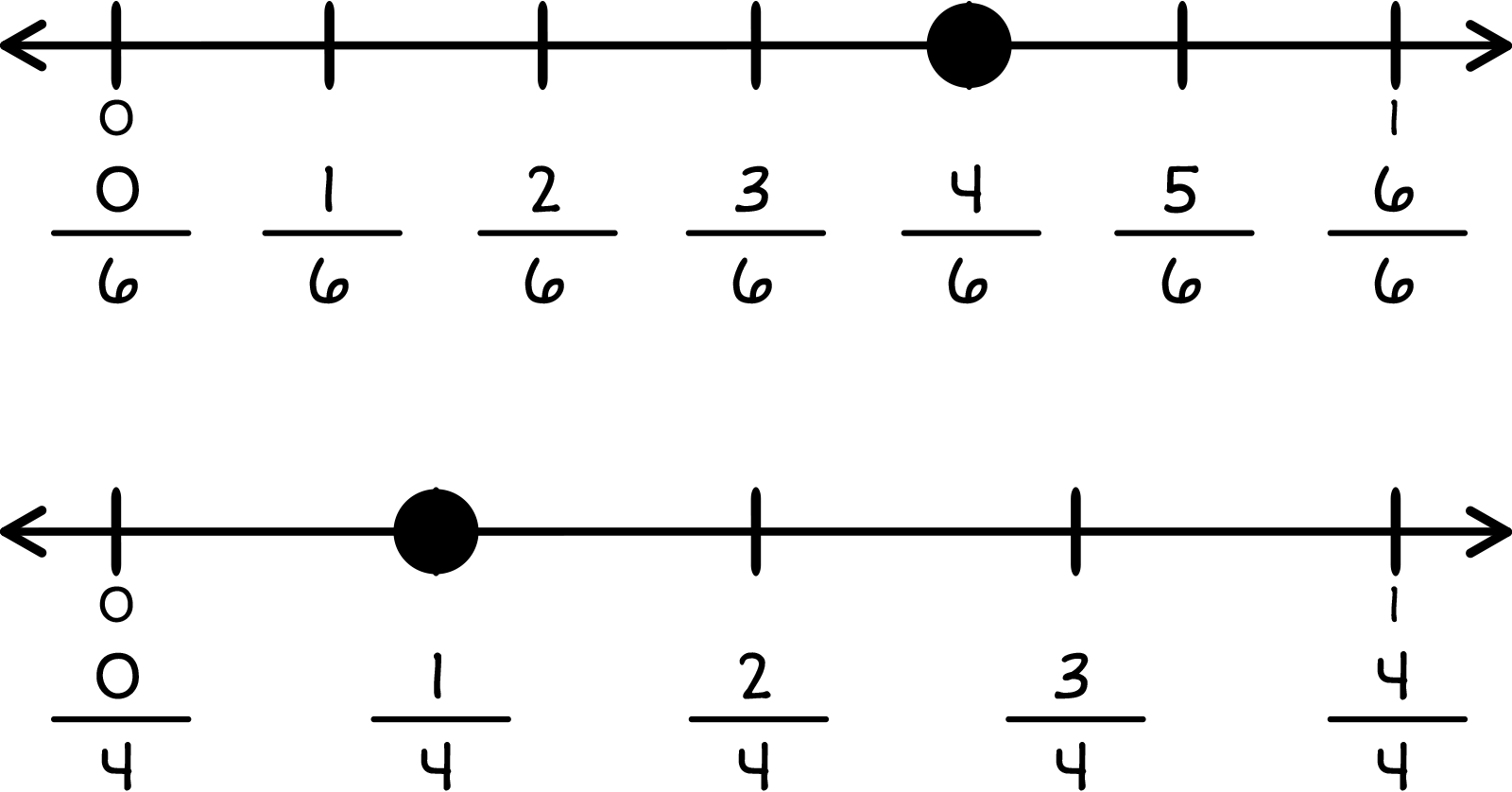
Two number lines.
Top: Number line from 0 to 1 with 7 marks in between. Marks are labeled from 06 to 66 with a dot on 46.
Bottom: Number line from 0 to 1 with 5 marks in between. Marks are labeled from 04 to 44 with a dot on 14.
-
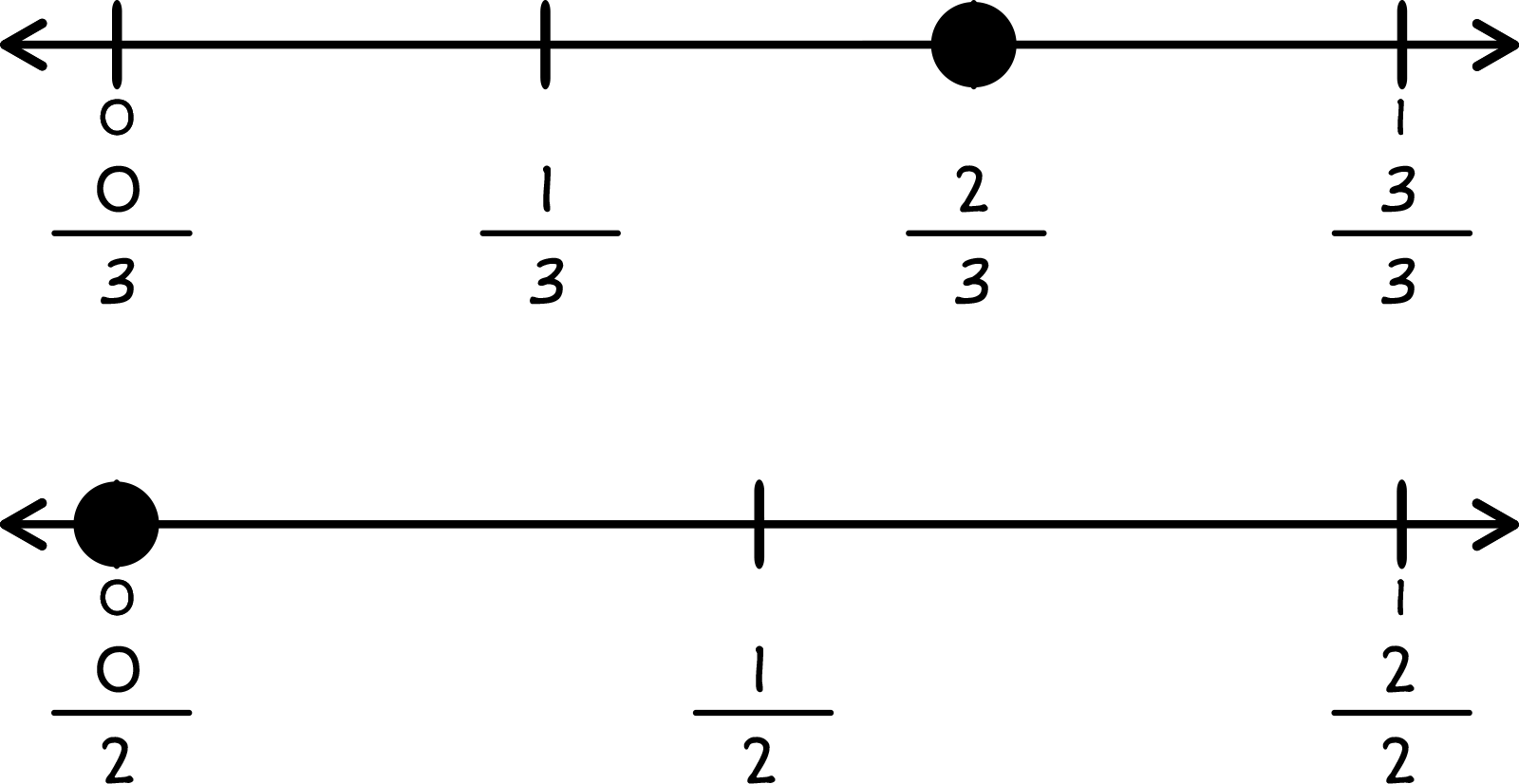
Two number lines.
Top: Number line from 0 to 1 with 4 marks in between. Marks are labeled from 03 to 33 with a dot on 23.
Bottom: Number line from 0 to 1 with 3 marks in between. Marks are labeled from 02 to 22 with a dot on 02.
-
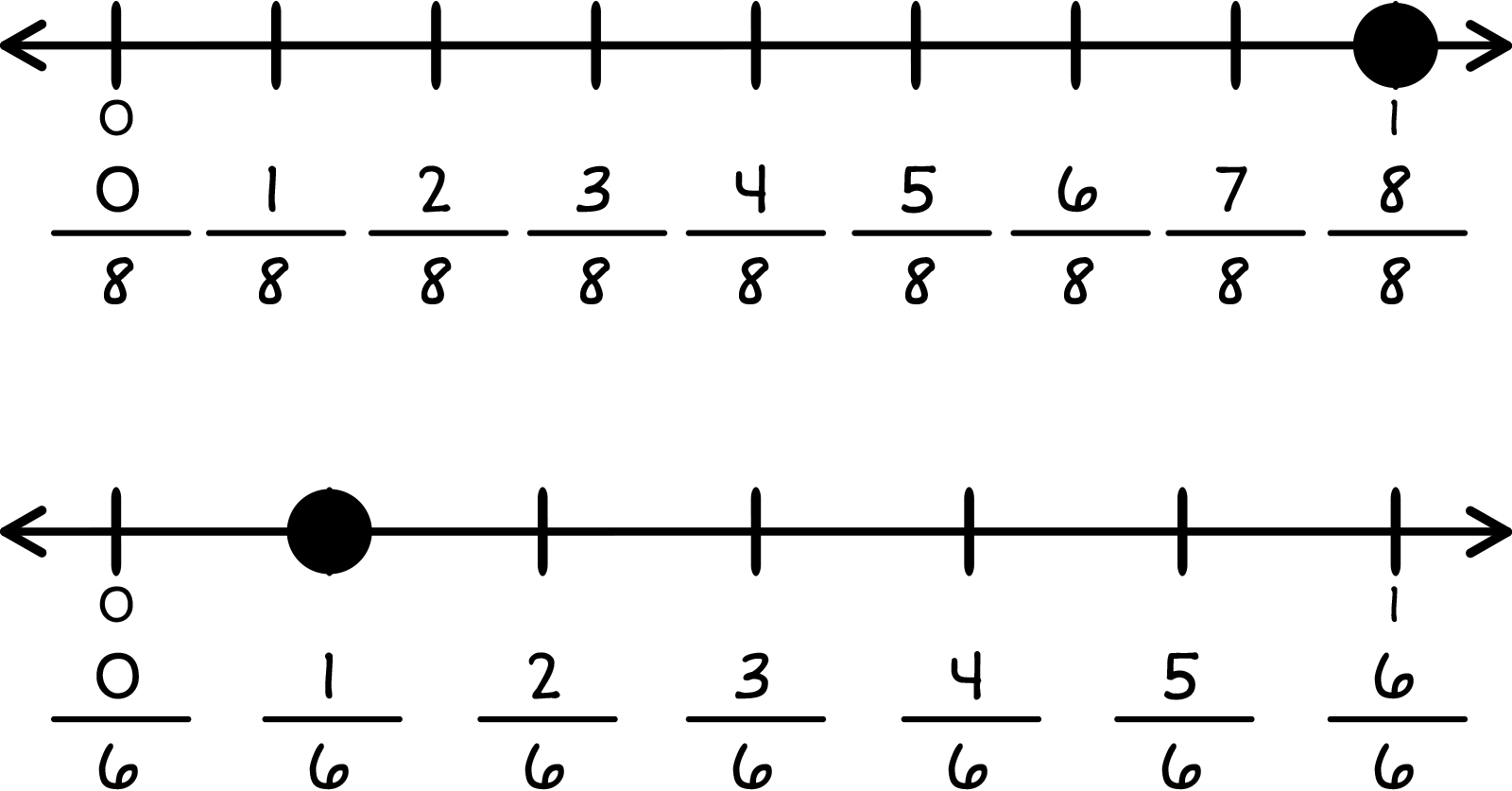
Two number lines.
Top: Number line from 0 to 1 with 9 marks in between. Marks are labeled from 08 to 88 with a dot on 88.
Bottom: Number line from 0 to 1 with 7 marks in between. Marks are labeled from 06 to 66 with a dot on 16.
Yes! The dots on these number lines make a straight line from 48 to 12.
Sorry, that is not correct. The dots on these number lines do not line up.
Sorry, that is not correct. The dots on these number lines do not line up.
Sorry, that is not correct. The dots on these number lines do not line up.
10. Which models show 03 is equivalent to 04?
-
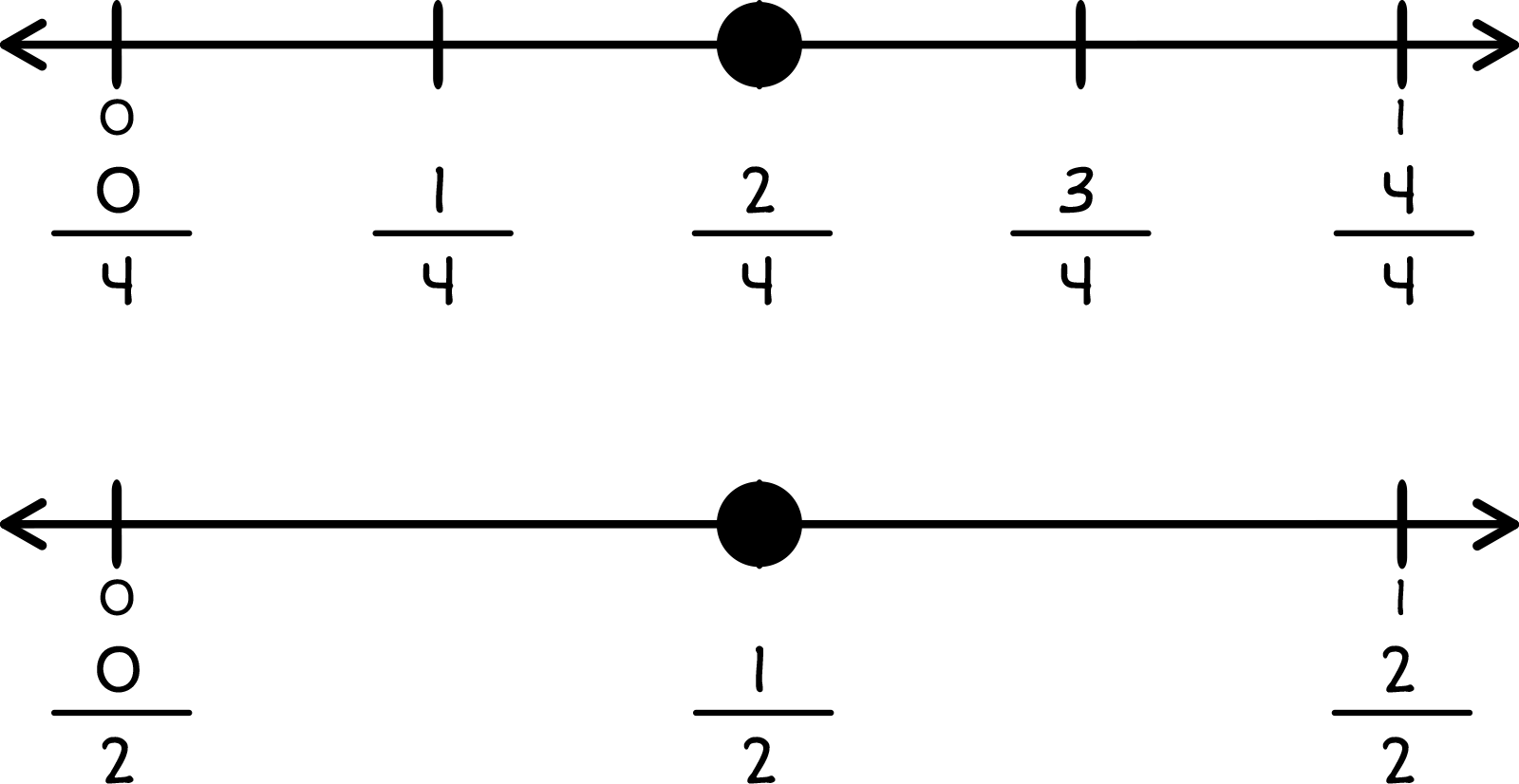
Two number lines.
Top: Number line from 0 to 1 with 5 marks in between. Marks are labeled from 04 to 44 with a dot on 24.
Bottom: Number line from 0 to 1 with 3 marks in between. Marks are labeled from 02 to 22 with a dot on 12.
-
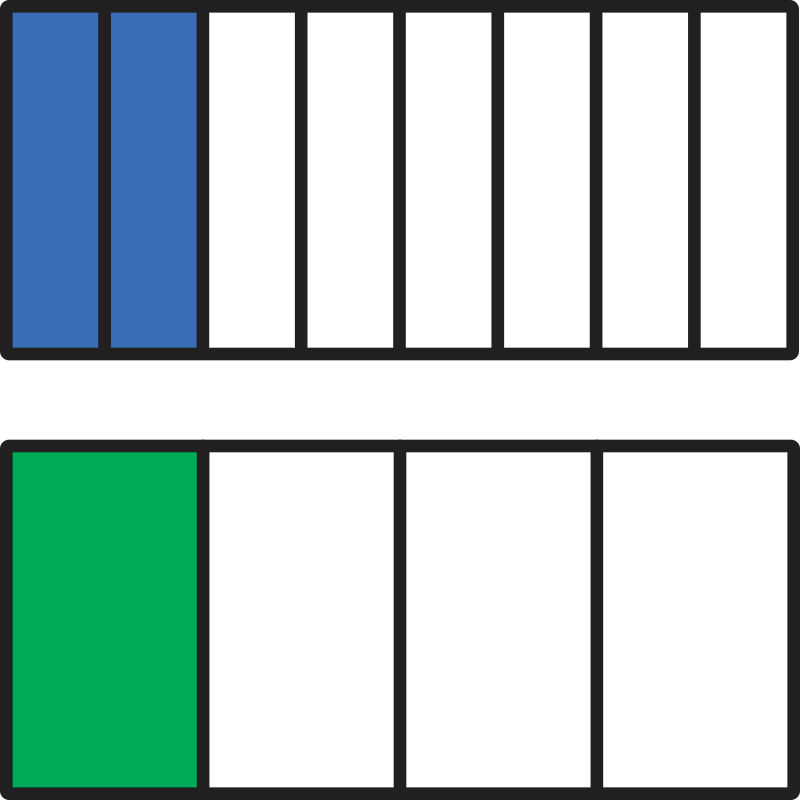
Two rectangles.
Top: Rectangle partitioned into 8 parts with 2 filled in.
Bottom: Rectangle partitioned into 4 parts with 1 filled in.
-
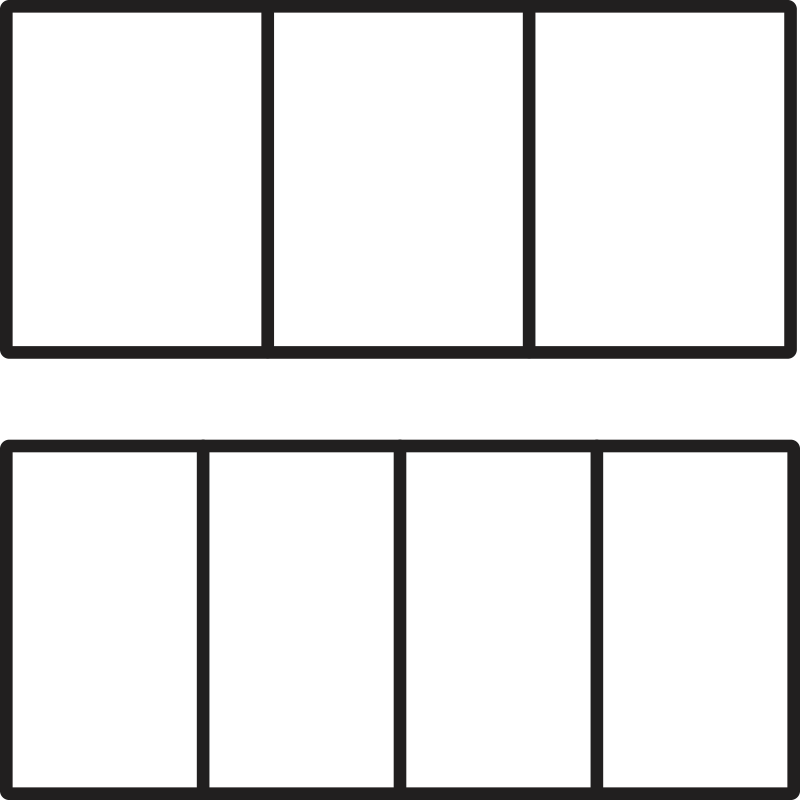
Two rectangles.
Top: Rectangle partitioned into 3 parts with 0 filled in.
Bottom: Rectangle partitioned into 4 parts with 0 filled in.
-
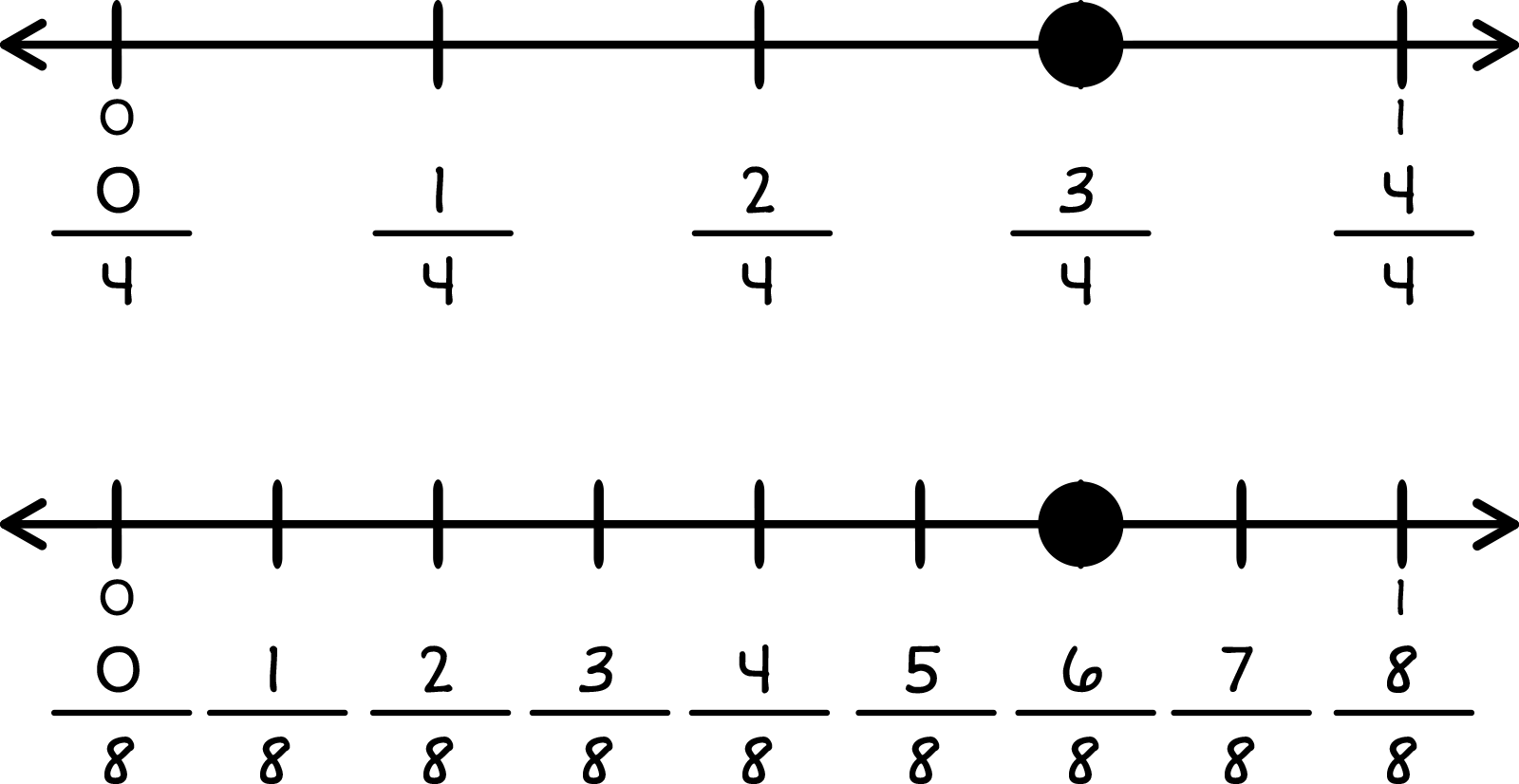
Two number lines.
Top: Number line from 0 to 1 with 5 marks in between. Marks are labeled from 04 to 44 with a dot on 34.
Bottom: Number line from 0 to 1 with 9 marks in between. Marks are labeled from 08 to 88 with a dot on 68.
Sorry, that is not correct. These number lines show that 24 is equivalent to 12.
Sorry, that is not correct. These shapes show that 28 is equivalent to 14.
Yes! These shapes show that 03 is equivalent to 04.
Sorry, that is not correct. These number lines show that 34 is equivalent to 68.
Summary
Questions answered correctly:
Questions answered incorrectly:
